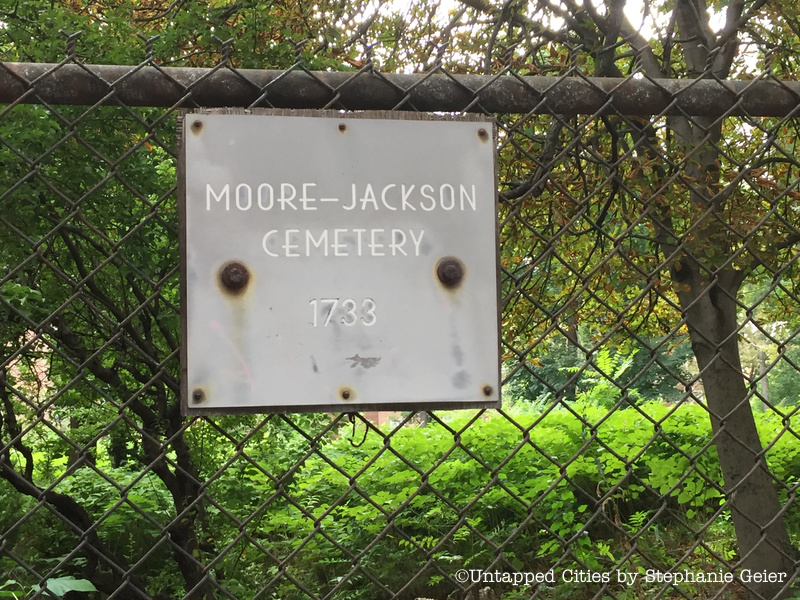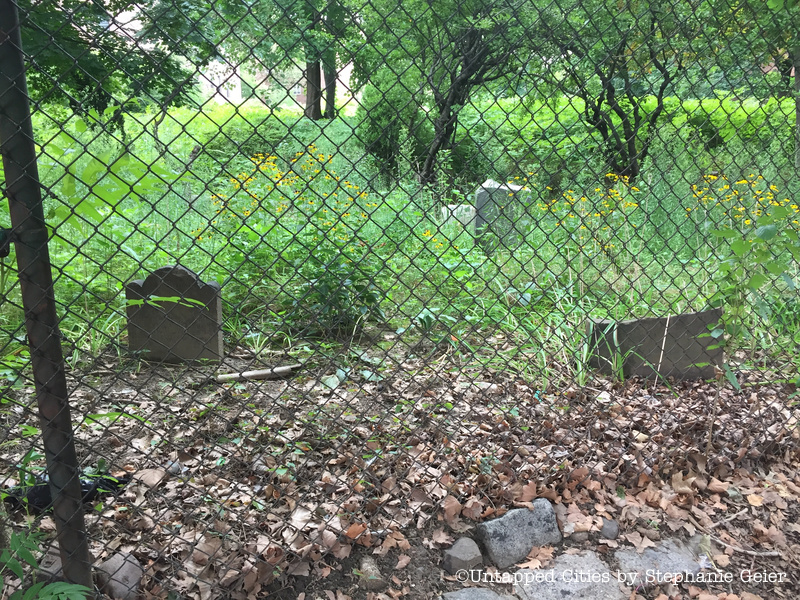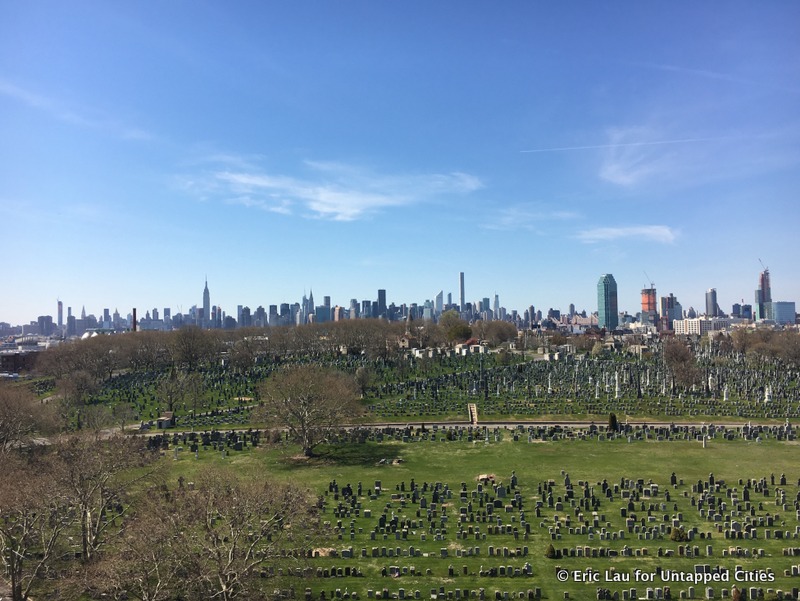Historical Sites
Moore-Jackson Cemetery

Right off the bat, one of the most unexpected places in Woodside is the surviving colonial burial ground, the Moore Jackson Cemetery. Discreetly hidden at at 31-30 to 31-36 54th Street, this cemetery is one of New York City’s oldest and smallest, with just 15 remaining headstones. Some of the surnames on the headstones include Moore, Jackson, Fish, Rapelye, Hallet, Mecke, and Berrian. The most well-preserved of the tombstones is that of Augustine Moore, who died in 1769.

The burial ground was created in 1733 on the farmland of Samuel Moore, the son of Newtown’s first minister, as part of 100 acres that included a farmhouse. After a man named John Jackson married into the family, the burial ground became the “Moore-Jackson” cemetery.
In the 1820s, the land was sold except for the cemetery, with the cemetery’s last internment occurring in the late 1860s. Over the years it fell into decay, overgrown with weeds and falling victim to vandalism. It wasn’t until the 1970s that real restoration efforts emerged and local residents began to pay more attention to the cemetery’s well-being. It was finally declared a landmark in 1997 and is currently owned by the Queens Historical Society.
Calvary Cemetery

Since you now know about one of New York City’s smallest cemeteries in Woodside, head over to the largest cemetery in the country (by number of internments). Spanning both Woodside and Maspeth, the vast Roman Catholic Calvary Cemetery is 365 acres. The site of about 3 million burials, it is not only the largest, but also one of the oldest cemeteries in the country. Calvary Cemetery is owned by the Roman Catholic Archdiocese of New York and managed by the Trustees of St. Patrick’s Cathedral.
The cemetery is divided into four sections: First Calvary Cemetery between the Long Island Expressway and Review Avenue; Second Calvary Cemetery on the west side of 58th Street between Queens Boulevard and the Brooklyn–Queens Expressway; Third Calvary Cemetery on the west side of 58th Street between the Long Island Expressway and the Brooklyn–Queens Expressway; and Fourth Calvary Cemetery on the west side of 58th Street between the Long Island Expressway and 55th Avenue.
The history of Calvary Cemetery began in 1817, when the Trustees of Old St. Patrick’s Cathedral found that their Mulberry Street Cemetery was reaching capacity. In 1847, mired by the cholera epidemic and burial ground shortage in Manhattan, the state passed the Rural Cemetery Act allowing nonprofit corporations to operate commercial cemeteries. The cathedral then used land they purchased in Maspeth to create Calvary Cemetery, which was consecrated by the Archbishop in 1848.
As burials rose, the Archdiocese expanded the cemetery’s acreage, transforming it into the vast area it is today. It is now home to the Calvary Veterans Park, which contains the Calvary Monument honoring the 69th Regiment. It is one of many public parks to serve as a burial ground, although it is the only New York City park completely surrounded by a cemetery. This park, along with the cemetery’s vast tranquility and many notable figures buried inside, make it worth visiting.





